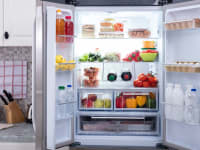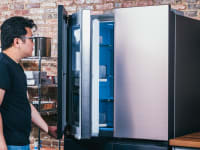Fridge organization tips from celebrity chef Curtis Stone
Here's to finding things and fresher food
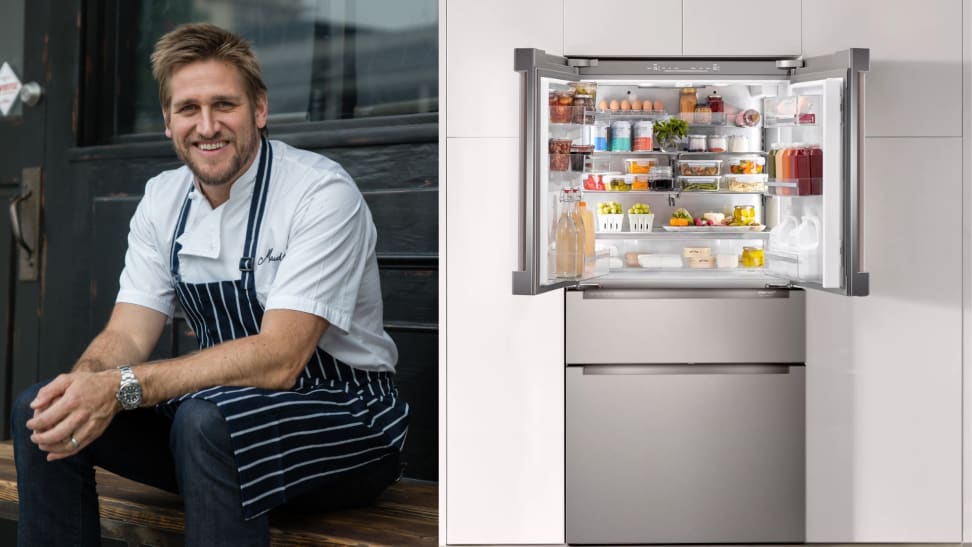 Credit:
Reviewed / Ray Kachatorian / Bosch
Credit:
Reviewed / Ray Kachatorian / Bosch
Products are chosen independently by our editors. Purchases made through our links may earn us a commission.
Whether you’re in the market for a new fridge, or looking to make the most of the one you have, refrigerator organization is the key to minimizing frustration and maximizing food enjoyment.
I recently moved into a new kitchen and had to organize my refrigerator from scratch. With a husband and two hungry boys to feed every day, I need to keep my fridge in tip-top shape. I turned to renowned restaurant and television chef and cookbook author Curtis Stone for some pro tips on setting up and keeping up an organized fridge. (Editor’s Note: Stone is a brand partner with Bosch.)
“The Stone household is also a family of four which means varying tastes, so I have plenty of ingredients in the refrigerator to accommodate everyone and prepare my wife and sons’ favorite meals," Stone says. "Organization and maximizing space are key! Knowing how to organize a refrigerator can help you make the most of your fresh ingredients.”
Ultimately, maximizing usage of what we buy is crucial to preventing food waste and saving money. “The biggest kitchen tragedy,” according to Stone, “is tossing the best ingredients into the bin because they spoil.”
We wholeheartedly agree. Use these tips to give your refrigerator a chef-inspired makeover.
1. Take stock
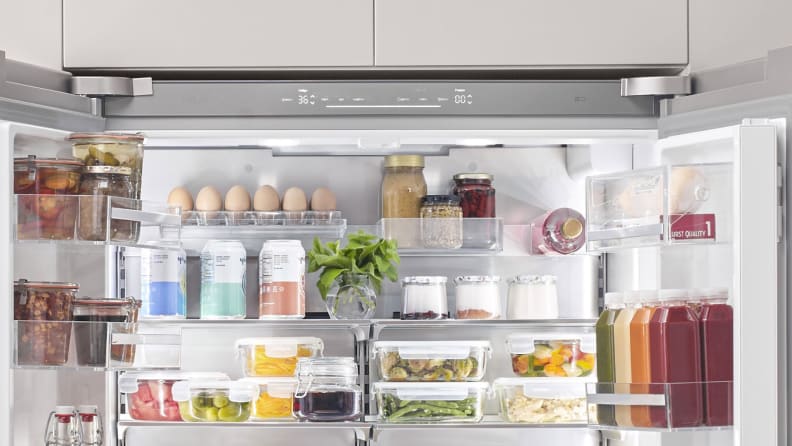
Knowing exactly what you need before you shop can set you up for fridge organization success.
It’s important to know what you already have so you don’t overbuy. This will also help prevent overcrowding so that you can actually see what you have, and use it before it goes bad.
Stone says, “My first tip is related to inventory—before grocery shopping, I like to have an idea of the meals I will be making for the week to avoid overbuying. This is such an easy and common mistake when going for a grocery run. But the clutter is not only wasteful, it also makes it difficult for the cool air to flow through and around all of the contents in your refrigerator, which can lead to spoiling.”
2. Shop fresh, local, and often
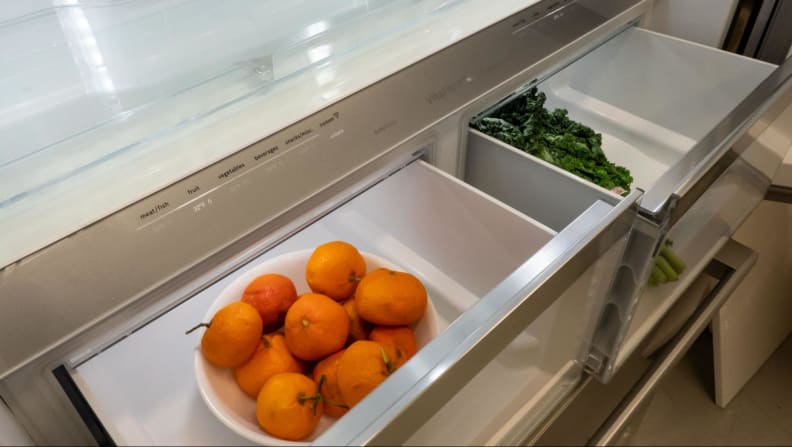
The Bosch crispers have a few custom temperature settings: 29°F (Meat/fish), 32°F (Fruit low humidity), 32°F (Vegetables high humidity), 34°F (Beverage), and 40°F (Snack).
Stone recommends, “It is best to shop for fresh produce often and buy only what you will use within a few days to reduce food waste. Also, shop seasonally and locally. You’ll get the best taste from fruit and veg when it’s at the peak of its season and hasn’t traveled too far.”
Eat up the most delicate fruits and veggies first, or give them a fighting chance by storing them in temperature-controlled crisper drawers. “Berries and leafy greens have a shorter shelf life,” Stone adds. “While many people [try to] extend the freshness of berries by wrapping them in damp paper towels in a plastic bag, or spraying them with white vinegar … your berries need to breathe.”
It’s best to store them, and other delicate produce, in an open container in the crisper drawers. In many newer refrigerators, you’ll find increasingly advanced controls for temperature and humidity, like those in Bosch’s VitaFreshPro drawers. Multiple digital controls allow you to select the optimal setting for exactly what you are storing. And in an optimal environment, food stays fresher longer.
3. Create “zones” and customize your space
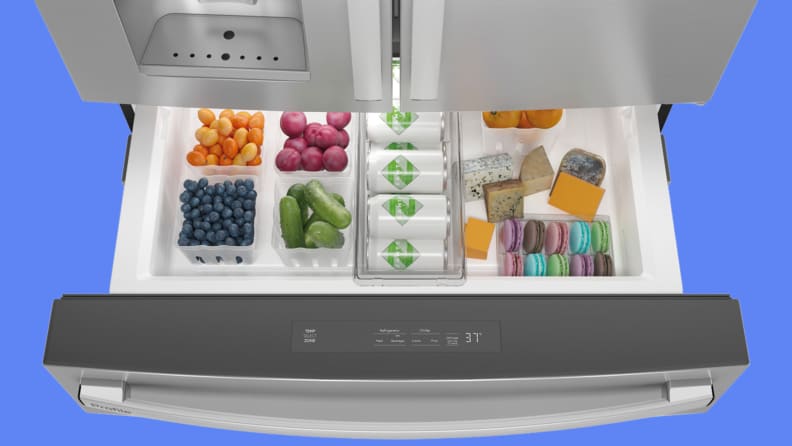
The flex drawer is a separate compartment located between the refrigerator and freezer that comes with its own temperature controls.
Beyond separating fruits and vegetables in the crisper drawers, and meats and cheeses in the deli drawer, Stone recommends creating “zones” for specific ingredients. Group like items and then adjust shelves accordingly. Instead of cramming things in, adjust to the right height for your favorite yogurt brand or your most-used storage containers.
In those zones, utilize all of the available storage accessories that come with your refrigerator. Whether it’s gallon door bins for hefty beverage cartons, or something more specialized like the Bosch FlexBar with modular storage for bottles, eggs, and small items, manufacturers spend a lot of time imagining what you might need to store, so take advantage of the storage options for their intended uses.
According to a study commissioned by Bosch, 61% of Americans believe they would waste less food if their fridge had more useful storage capacity. If you’re in the market for a new fridge, look for one with flexible storage options, like the extra drawer in the GE Profile PVD28BYNFS, with its own custom temperature controls that can turn it into extra fridge or freezer space.
If you need to work with what you’ve got, you can at least categorize your items and group like things together. While the majority of the top fridges in our testing are French-door style, Stone adds that for easy access in side-by-side or freezer-on-top models, “I recommend grouping similar items together and storing your most-used items closer to the door.”
4. Don’t neglect the freezer
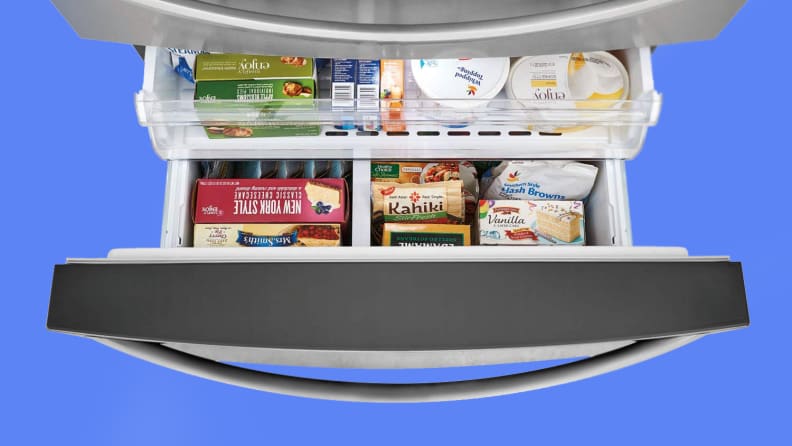
Moveable drawers create layers that help keep food organized in the freezer and promote air flow.
Many people use the freezer as the kitchen equivalent of long-term parking, but don’t let your freezer become a wasteland. It can actually be even more beneficial for short-term food preservation, which can help you save money.
First, make sure everything you freeze is easily accessible. Here’s how Stone sets up his drawer-style freezer: “When organizing my freezer, I like to keep likeminded items together and place the items I am more likely to use closer to the top layer. I usually store meat, poultry, and fish on the bottom layer since I know I won’t always be cooking a specific protein every day. I then follow with frozen foods we use more often like vegetables and fruit. Of course, I also have to make sure my kids’ favorite frozen treats, like ice cream, are easy to reach for them, which is why I like to place it last for kid-level access.”
Next, consider freezing produce before it has the chance to go bad. You can even take advantage of peak-season farmer’s market produce and stock up if you freeze the right things and treat them properly. Stone recommends freezing fresh fruits and veggies in smaller portions for easy access. “And, don’t forget to date your fruit and vegetable freezer bags or containers,” he cautions.
However, there are some things Stone says don’t belong in the freezer. “I recommend that you avoid freezing fruits and vegetables with high water content such as melons, cucumbers, tomatoes, and celery. Once these items defrost, they start to lose most of their juice leaving you with unappetizing, mushy fruits and vegetables.”
The type of freezer you own also contributes to the longevity of your frozen food. The layered style of bottom-mount drawer freezers helps with air flow so food isn’t packed in too tightly. An overflowing freezer won’t function as well as it should, causing more temperature fluctuations that lead to freezer burn.
5. Capitalize on technology
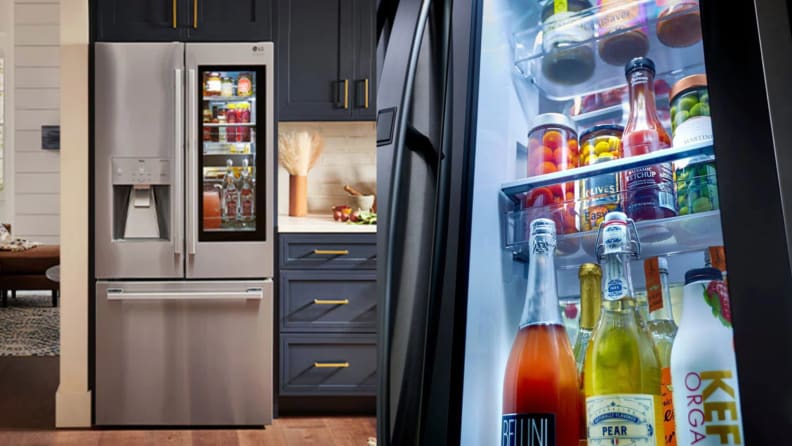
LG's transparent LCD display combines convenience and innovation for users, while also cutting down on energy waste.
The basic function of a refrigerator hasn’t changed since it was invented, so many of us may not be used to using high-tech features on such a common household appliance. But, if your fridge comes with advanced connectivity, set it up and use it to your advantage.
As a Bosch brand partner, Stone is particularly fond of the HomeConnect platform. The app allows you to adjust temperature controls remotely, and most helpfully alerts you if any of the doors have been left open, which helps to avoid food waste and conserve energy.
Whether it’s Bosch’s HomeConnect, LG’s InstaView, or Samsung’s Family Hub, these advanced features are meant to help you stay connected to what’s in your fridge and make it easier to know what you need. You can even use some of these features to keep track of expiration dates, access food quicker, and make sure you use up what you buy to make the most of your weekly grocery budget.
The product experts at Reviewed have all your shopping needs covered. Follow Reviewed on Facebook, Twitter, Instagram, TikTok, or Flipboard for the latest deals, product reviews, and more.
Prices were accurate at the time this article was published but may change over time.

